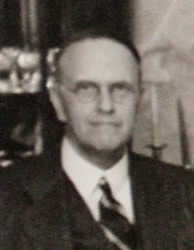|
Physics and history of "The Q Song" There are many types of oscillators in the universe, from the simple mass hanging on a spring, to resonant electrical circuits used for cell phone transmissions, to the sinusoidal motions of a guitar string after it is plucked, to the swinging of a pendulum, to vibrations of the atoms in a molecule, to the swaying of a building during an earthquake. The "quality factor" Q describes the tendency of a system to oscillate for many periods before the oscillation dies away.
The concept is important both for oscillators that are given some initial kick after which they oscillate with decaying amplitude, and for oscillators that are supplied with a drive force (e.g. periodic pushes to a child on a swing) and move with a steady-state amplitude.
Quantitatively, Q equals 2π times the number of oscillation cycles required for the energy to decay by a factor 1/e. Verse 1: Q is also equal to ω0/γ, where ω0 is 2π times the resonant frequency and γ is the rate of energy decay. (Formally, γ is one over the time required for the energy to decay by a factor 1/e.) Verse 2: If you draw a graph of power supplied to a driven oscillator vs. frequency (which is equal to the power dissipated), Q is the ratio of the peak frequency (aka the resonant frequency) to the full-width-at-half-maximum of the curve. Verse 3: The response amplitude (e.g. the amplitude of motion of a mass on a spring) at the resonant frequency divided by the response amplitude at very low frequency also equals Q. Take a fun quiz on the physics and history of Q! .. Take a challenge quiz on Q! Play recording: Download recording (mp3) [Up and down arrows are pitch cues.] [Slowing down at the start and middle of the verse, then a tempo at the end of the verse] Verse 4: She’s the queen ser↑ene of the ↑bouncing scene, Return to PhysicsSongs.org main page Background image: ID 49576585 © Martin089 | Dreamstime.com |
